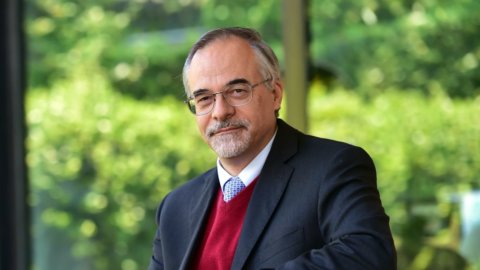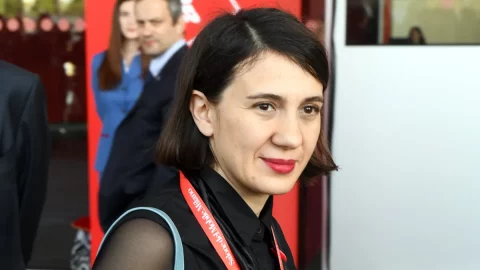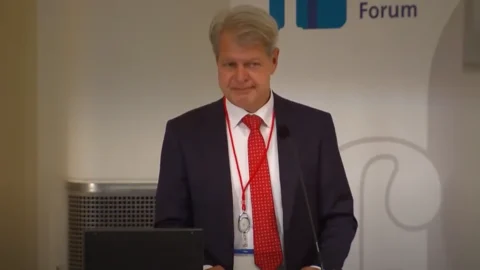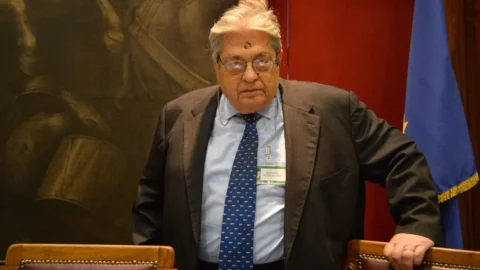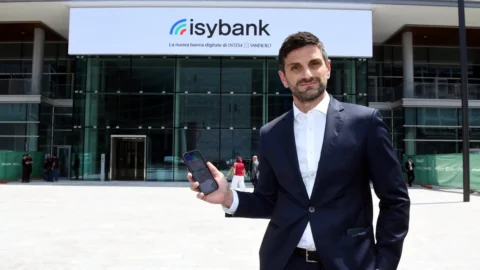For Rai and for the entire TLC system, 2021 is a year of great transformations. For the Public Service, the first appointment is already scheduled for the next few weeks when the budget must be approved and the new directors appointed. For the entire perimeter of the telecommunications system, the first commitment is scheduled for the first few days of next September with the start of the refarming of frequencies which will take place in the midst of the debate on the single broadband network. At the same time, 5G is in full deployment and on the eve of when the PNNR will be able to take shape with the huge funds destined for technological innovation in the country.
We turned to Stefano Ciccotti, current CTO of Viale Mazzini, some questions precisely aimed at understanding well what the overall strategies that Rai intends to pursue in order to be able to adequately face the technological challenges that arise. In fact, the Company is a central subject in the whole process of technological innovation in the sector and is faced with a crossroads of problems of great importance: not only the change of top management, but also the prospect of a reform that will not affect only the Public Service but the entire perimeter of the industrial choices of all telecommunications operators. Europe has asked us for it, as the recent sentence of the Court of Justice has ordered, but a market that has profoundly changed since the last regulation took place, way back in 2014, with the Gasparri Law, requires it even more.
Engineer Ciccotti, from 1 September 2021, phase 2 of the refarming of frequencies around 700 MHz will start, as provided for by the community directive 2017/899 of 17 May 2017, relating to the destination of this band to boost the development of 5G , mobile technologies and new generation ultra-broadband. This means that broadcasters will have to abandon the transmission of the television signal currently encoded in MPEG-2 to switch to MPEG-4. From the point of view of the users, of the viewers, this means that they will have to equip themselves either with a new device or with a decoder suitable for receiving the new signals. At the moment, this renewal process seems to be proceeding slowly and there is the risk that a few million old generation televisions will go "black" in September. What prospects do you see for Rai? What strategy do you intend to follow to adequately support this challenge?
“RAI is proceeding quickly to update its digital terrestrial networks and we will be able to strictly comply with the ministerial timetable. Through the commitment of the RAI engineering and research areas and of the subsidiary Rai Way, we have developed a series of technological solutions, in some cases extremely advanced, which allow us to operate with maximum flexibility. In practice, starting next September we will be able to satisfy - in DVB-T technology - various content "mix" scenarios, both in MPEG2 and MPEG4, capable of allowing RAI to cope with the slowdown in the process of renewal of the receiver park by users. From June 2022 we will then be ready to activate the broadcast mode in DVB-T2 and, at that point, we will not only offer the highest possible quality in "High Definition", which has now become the "new normal" standard for the entire RAI offer, but if we want we can also broadcast at least one program in 4K-UHD, as we are already doing experimentally in Valle d'Aosta”.
How do you think the coexistence of a model of content diffusion based on broadcast versus broadband can be viable in the near future? Will television be increasingly "smart" connected to the network? What are Rai's projects in this direction?
“In the last three years, and in particular during the past year, we have witnessed a clear paradigm shift: we have gone from the viewer/listener used to enjoying our contents in a substantially passive way and through the methods of reception we have chosen, to a completely opposite behaviour, in which it is the viewer/listener, by now I would say largely "literate" and prone to the use of digital tools, who not only decides whether and when to access our contents, but also "how" to do so. As a result, we had to change the way we distribute content very quickly, accelerating the integration, exchangeability and accessibility of our offer across multiple platforms, working above all on the broadband platform par excellence, represented by Rai Play. Digital terrestrial, integrated by the satellite component, now sees its role not only "joined" by broadband but, with the progressive and substantial affirmation of Smart TVs and other home devices connected to the Internet, "completed" and, by bands of population which I believe will increase progressively and significantly over time, partly "replaced". To face this challenge we are moving on two fronts: on the content distribution side we continuously update the Rai Play app, in order to make the most of the networks and services that internet operators make available to us, while on the device side we are implementing solutions " bridge” which, by exploiting new hybrid standards, allow us to guarantee flexible navigation between the two worlds of digital terrestrial/satellite and broadband. All this to allow those who watch us to be able to do it in complete freedom, anywhere and with the terminal they prefer".
What are the strategic guidelines that Rai intends to pursue in the development of 5G and ultra-broadband in the radio and television production and broadcasting sector?
“On the production side, we are committed to implementing an ambitious modernization program, capable of supporting a strong multiplatform and content-centric development with numerous specific projects. To cite just a few chapters of the intervention, we will consolidate the "linear" (generalist and thematic channels) and "broadband" (RaiPlay) broadcasting platforms so as to be able to aim in the reasonably near future for a single, IP-based infrastructure, which allows RAI content to be distributed on all broadcasting means in an even more homogeneous and coordinated way than we are already able to do today. The Ultrabroadband enters the field in the expansion processes of the back-end infrastructures for the treatment and unified management of all Rai contents through the strengthening of the corporate data-centres also with a possible extension in the cloud. Talking about the cloud is not as simple as we sometimes read: in order to virtualize a series of high-value-added production services outside the company, it is necessary to carefully evaluate complex aspects, such as the quality, security and resistance of the infrastructures on which we rely , guarantee of the "armoring" of our contents against possible "cyber" attacks, great capacity for "data governance", presence of high-level IT skills and in the right quantity. It is therefore certainly a choice of technological strategy but with a strong impact on the whole of the company organization, and as such it must be considered and pursued. Precisely this intrinsic delicacy of the theme prompts us to look with extreme interest at the development plans of the so-called national "Public Cloud", and at European projects, such as Gaia-X and other initiatives, for example in the EBU; which highlight the great contribution of the media to the development of a common infrastructure. Furthermore, 5G represents the key to the development of advanced mobile, ubiquitous and highly resilient production solutions, which will be integrated into our already launched projects for the rationalization of infrastructures for the production of News, both at a national and regional level, enabling more modern and efficient production models for the well-established types of production, to be combined in the medium term with a structural refarming of our Production Centers".
In a highly competitive market on a technological level, both in the content production component and in the distribution of the same, what commitments and with what costs will it be possible to sustain the modernization of Rai systems?
"The RAI top management has been very close to us in these three years in supporting the technological relaunch effort that we have launched, allowing us even in a critical phase such as the pandemic to be able to count on important technological investment plans: I limit myself to mentioning in the three-year period 2021-2024 for TV Production and Broadcasting alone around 160 million euros of investments, largely already implemented in multi-year orders. We already have equally important commitments on the ICT front, the engine of the RAI digital revolution and a very effective tool in the introduction of "smart working" at all levels dictated by the pandemic, and on Networks and Platforms as regards the Rai Play web farm and digital terrestrial /satellite".
The large national broadcasters do not have a proprietary CDN (Content Delivery Network). Do you think it possible that a project of common interest could be launched with Mediaset and the other interested operators?
“We are demonstrating day after day that to compete with global OTTs you need creativity, industrial capacity and operational readiness. All of this on telecommunications infrastructures that are not ours, but of which we cannot limit ourselves to being only "contracted customers". A non-negligible aspect of the evolution process is represented precisely by the search for increasing robustness to exogenous stresses, in particular a not always predictable modulation of traffic volumes, which however cannot determine any decline in the expected levels of quality in the provision of services . For this reason it is essential to directly have "intelligence" distributed on these networks, to guarantee the quality levels we expect and avoid bottlenecks, whether they are technological, economic or more generally access to our content by our viewers/ listeners. "Owning" this intelligence directly is an indispensable factor in my opinion: I am talking about intelligence above all of proximity, suitably located throughout the territory, made up of a confidential edge-computing infrastructure that can be completely managed by us, which favors access to our contents by any internet customer. "Owning" does not necessarily mean being the "owner" of an HW or SW component, but it certainly implies a strong presence in the infrastructure alongside TLC operators. We are already moving along this logic, and I think that a common policy of sharing objectives with other subjects could facilitate everyone's work but, I would like to underline it, always remembering our specificity and our driving role as a public service".
For some time there has been debate on the "pole of the towers" as well as the "single network" without coming to terms with it. He considers them feasible scenarios for the adaptation of the entire TLC system of our country
"It's a topical and understandable question, but it concerns aspects of corporate strategic positioning that go far beyond a technological reading such as the one I am responsible for, so I take the liberty of not answering".
What role do you think Rai should play within the PNRR and in which sectors?
“I think I can easily state that everything we are doing in the technological field falls fully within the chapter of “Digitalization, Innovation; Competitiveness, Culture”, and then there are other investment areas identified by the PNRR which can certainly see Rai as a great protagonist. We represent an important component of the public system, we are large users and "feeders" of digital infrastructures and, as I have tried to explain, we also continue to be great innovators. I think that a RAI read from this point of view allows us to be considered, if not main players, at least strong allies in the pursuit of success of the PNRR”.

